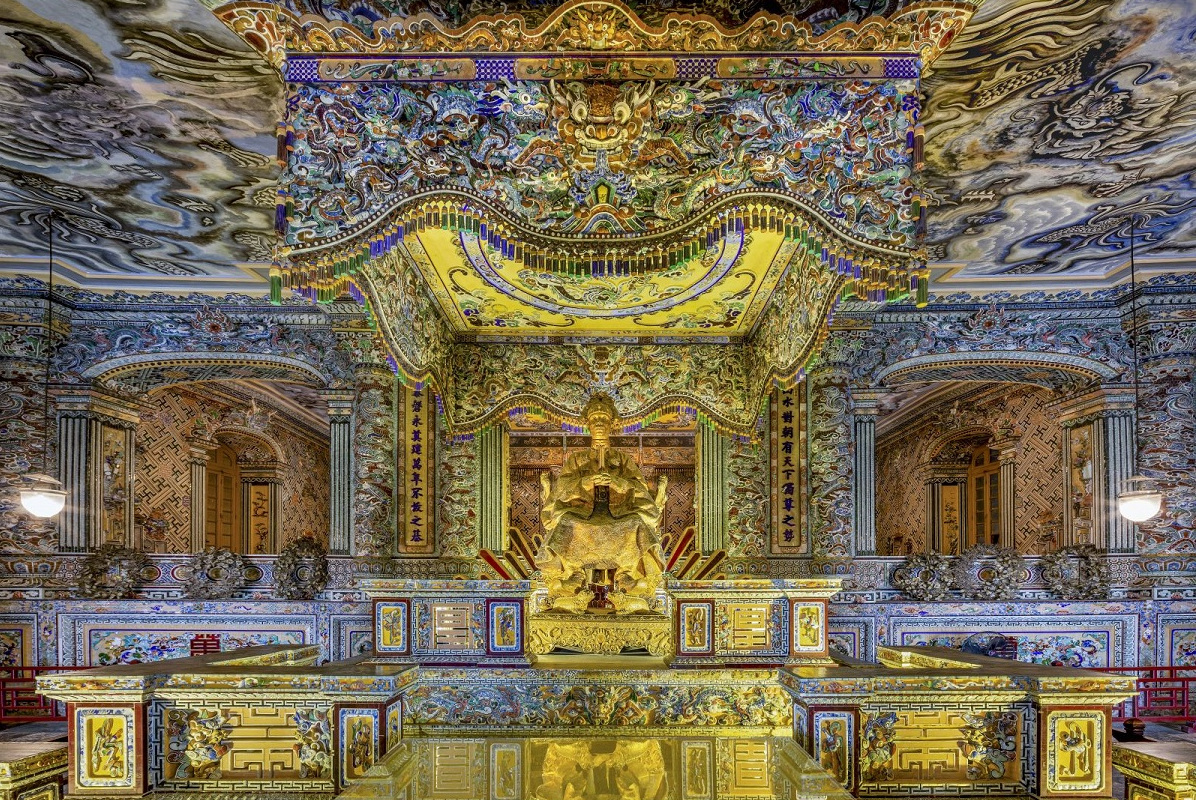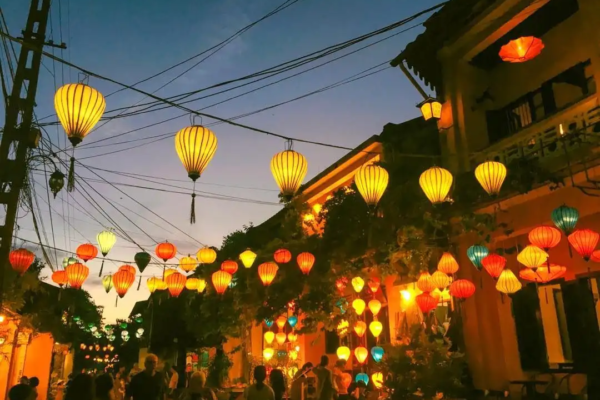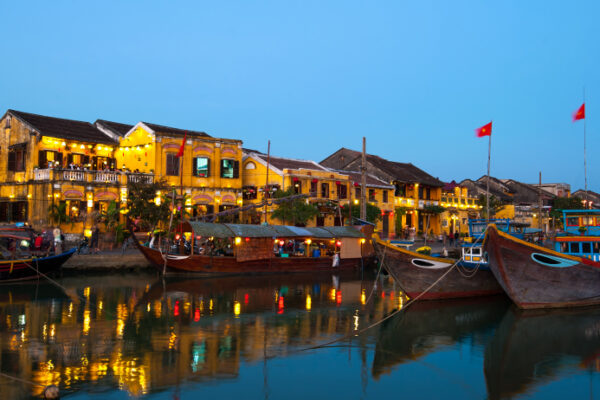As I stepped off the cyclo, the humid air of Hue enveloped me like a warm blanket. The ancient capital of Vietnam stretched before me, its history palpable in the very air I breathed. My mission for the day? To explore the famed Hue Royal Tombs, final resting places of the Nguyen Dynasty emperors and architectural marvels that have stood the test of time.
A Glimpse into Imperial Grandeur: The Khai Dinh Tomb
My first stop was the Khai Dinh Tomb, a fusion of Eastern and Western design that immediately caught my eye. As I climbed the steep steps leading to the main structure, I couldn’t help but marvel at the intricate stone carvings adorning every surface. The tomb’s facade, a mix of Vietnamese and European architectural styles, stood as a testament to Emperor Khai Dinh’s fascination with Western culture, making it a standout among Hue Royal Tombs.
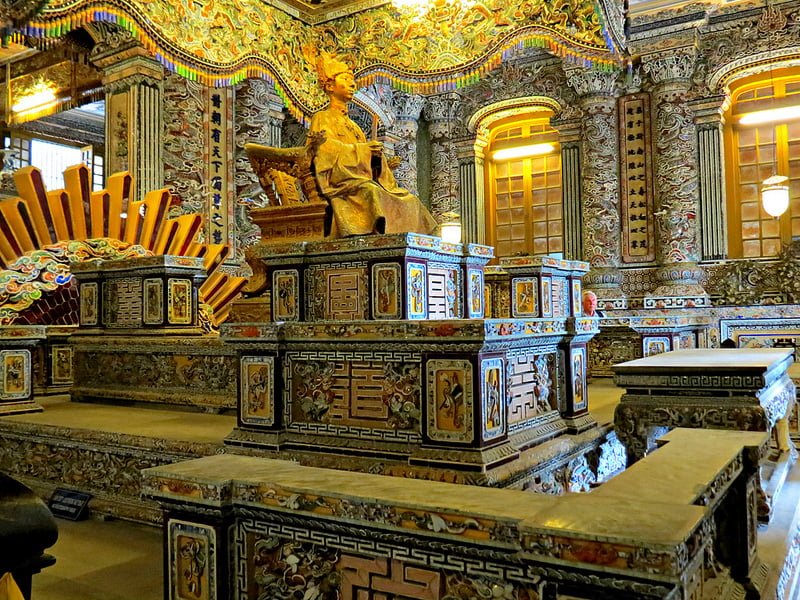
The elaborate architecture of Khai Dinh Tomb.
Visit Khai Dinh Tomb early in the morning to avoid the crowds and the intense midday heat. The play of light on the mosaic-covered interiors is particularly breathtaking during these hours.
Once inside, I was struck by the opulence of the main hall. Colorful glass and porcelain mosaics covered every inch of the walls and ceiling, creating a dazzling spectacle. The emperor’s final resting place, marked by a life-size bronze statue, seemed to glow under the soft light filtering through the windows of Khai Dinh Tomb.
As I explored, I struck up a conversation with a local guide who shared an intriguing tidbit: the construction of this tomb was so expensive that it led to increased taxes, causing resentment among the Vietnamese people. This small piece of information added a layer of complexity to the beauty surrounding me, reminding me of the often-tumultuous history behind such grand monuments among the Hue Royal Tombs.
The Poetic Serenity of Tu Duc Tomb
Leaving the grandeur of Khai Dinh behind, I made my way to the Tu Duc Tomb, a stark contrast in both style and atmosphere. Set amidst a landscape of pine trees and tranquil lakes, this tomb complex felt more like a peaceful retreat than a final resting place among the Hue Royal Tombs. Emperor Tu Duc Tomb is known for its serene beauty.
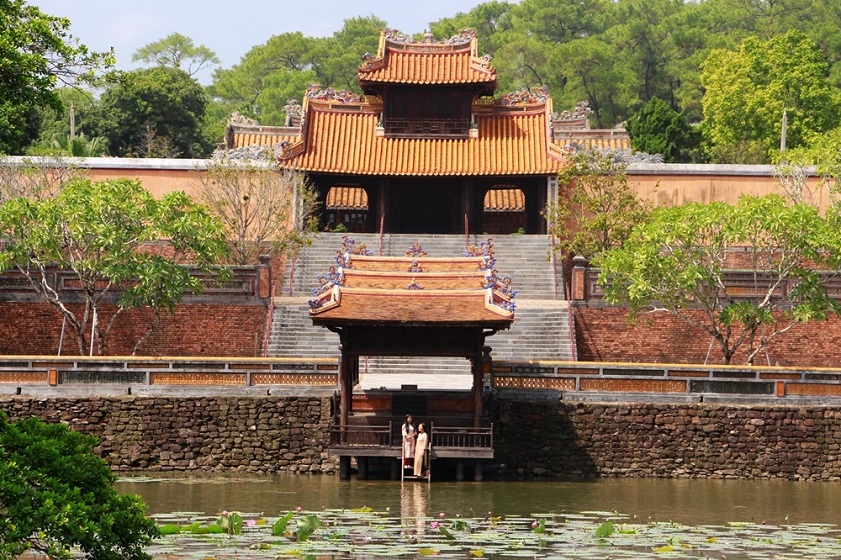
The tranquil landscape surrounding Tu Duc Tomb.
Emperor Tu Duc, known for his poetic nature, designed this tomb as a place of contemplation and relaxation during his lifetime. As I wandered through the grounds of Tu Duc Tomb, I could almost picture the emperor sitting by the lake, composing verses or enjoying a moment of quiet reflection.
The highlight of my visit was the Xung Khiem Pavilion, perched on the edge of Luu Khiem Lake within the Tu Duc Tomb complex. I sat here for a while, watching the occasional fish break the surface of the water and listening to the whisper of wind through the pines. It was a moment of unexpected serenity in the midst of my busy travel itinerary exploring the Hue Royal Tombs.
Wear comfortable shoes and bring plenty of water. The Tu Duc Tomb complex is expansive, and you’ll want to take your time exploring its various structures and gardens.
Hue Cyclo Rides: A Unique Way to Explore
While visiting the Hue Royal Tombs, I discovered that one of the most enjoyable ways to navigate between them is by cyclo. These three-wheeled bicycle taxis, unique to Vietnam, offer a charming and eco-friendly mode of transport for exploring Hue and its surroundings, including the tombs. Taking hue cyclo rides is a classic Hue experience.
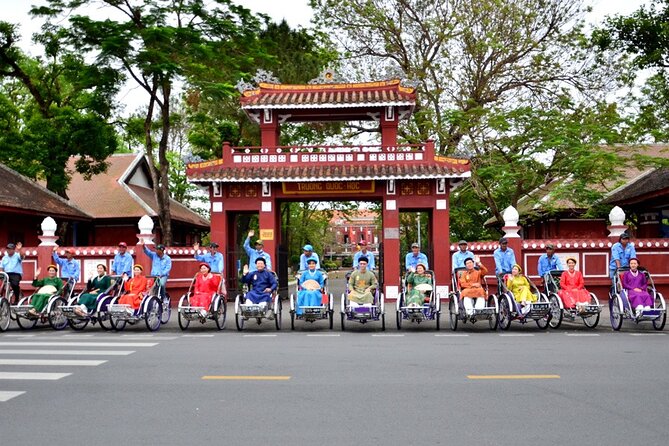
Exploring Hue with a traditional cyclo ride.
I hired a cyclo for the day, and my driver, Mr. Nguyen, proved to be a wealth of information about Hue’s history and culture. As we pedaled along the streets, he pointed out hidden gems I might have otherwise missed – a centuries-old pagoda tucked away down a narrow alley, a local market bursting with exotic fruits and spices – all part of the journey while using hue cyclo rides.
The gentle pace of the cyclo allowed me to soak in the sights and sounds of Hue in a way that would have been impossible in a car or bus. The cool breeze was a welcome relief from the heat, and the elevated seat gave me a perfect vantage point to observe daily life in the city while on hue cyclo rides between the Hue Royal Tombs.
Negotiate the price for your hue cyclo rides before setting off. A full day of exploring should cost around 300,000-400,000 VND (approximately $13-$17 USD), but prices can vary depending on the season and your bargaining skills.
Beyond the Tombs: Culinary Delights and Cultural Insights
No visit to Hue would be complete without sampling its renowned cuisine. After a day of tomb exploration, I treated myself to a feast of local specialties. The fragrant Bun Bo Hue, a spicy beef noodle soup, was a particular highlight, its complex flavors a perfect reflection of Hue’s rich cultural tapestry. These experiences complement a visit to the Hue Royal Tombs.
As I savored my meal, I reflected on the day’s experiences. The royal tombs of Hue are more than just tourist attractions; they’re windows into Vietnam’s imperial past, offering insights into the lives, beliefs, and artistic sensibilities of the Nguyen emperors.
Each tomb tells a unique story – from the extravagant fusion of East and West at Khai Dinh to the poetic tranquility of Tu Duc. Together, they paint a vivid picture of a dynasty that shaped Vietnam’s history and continue to influence its cultural identity today, forming the collection of Hue Royal Tombs.
Planning Your Visit: Essential Tips
- Timing: The best time to visit Hue is between January and April when the weather is mild and rainfall is low.
- Transportation: While hue cyclo rides are great for short distances, consider renting a motorbike or hiring a car for a full day of tomb exploration if you want to visit multiple Hue Royal Tombs.
- Dress Code: Remember to dress respectfully when visiting the Hue Royal Tombs. Shoulders and knees should be covered.
- Guided Tours: Consider hiring a knowledgeable guide to get the most out of your visit. They can provide historical context and help navigate the expansive tomb complexes like Khai Dinh Tomb and Tu Duc Tomb.
- Photography: Bring a good camera – the intricate details and stunning landscapes of the Hue Royal Tombs offer countless photo opportunities.
Conclusion
As I prepared to leave Hue, I felt a sense of connection to this ancient city and its imperial legacy. The Hue Royal Tombs stand as silent witnesses to Vietnam’s rich history, inviting travelers to step back in time and experience the grandeur of a bygone era. Visiting landmarks like Khai Dinh Tomb and Tu Duc Tomb, perhaps via hue cyclo rides, offers a deep dive into the past.
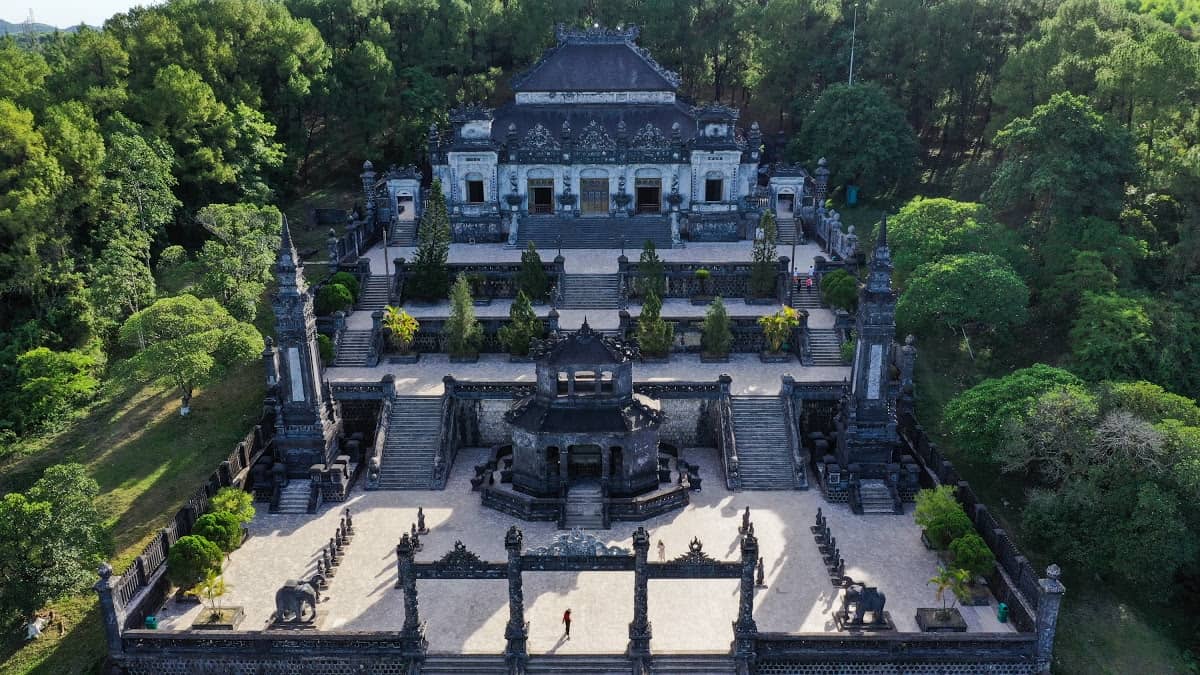
A general view of one of the magnificent Hue Royal Tombs.
For those seeking to delve deeper into Vietnam’s cultural treasures, I highly recommend exploring more destinations on Find Tour Go. From the bustling streets of Hanoi to the serene beauty of Ha Long Bay, Vietnam offers a wealth of experiences waiting to be discovered.
